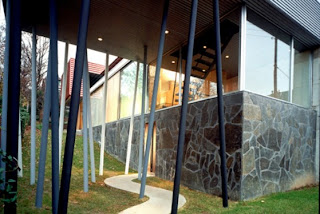There have been predictions of the future for as long as history can be dated back. These predictions come in many different forms, from writing, pictures, and the one with the most visual form, movies. In history class this week we were assigned to watch “The Metropolis”, a movie in the 1900’s that tries to define what would things be like in the future, or in other words, now. The special effects and pictography might not have the latest technology and look realistic, but the movie can reflect the architectural and cultural standpoint of that era.
I believe movies have become a big part in reflecting the ideas of human in the period of time the movies are made. The way we present our thinking or prediction of the future, relates back to the issue that we are facing in that period of time. For example, in these past few years, we have seen a huge amount of movies that are about the end of the world, such as 2012 and The Day after Tomorrow. Many movies made today or in the past decade depicts the future as the end or how close it is to the end of the world since we are having a crisis on global warming and natural disaster. If we were to look back about ten to twenty years, a hit movie would be The Waterworld, where the whole world changes into water and we try to adapt to living on man made islands. When robots were created, the hit movie would be A.I Artificial Intelligence and the scientific genres.
However, back in those times, analyzing from the movie, the big hit would be urbanization, industrialization, and the separation between classes. I believe the big scene that captured everyone’s astonishment back then would be the big scene where we could see hi rise buildings everywhere, traffic jams from cars, and helicopters flying all around. That were predictions from that age of time, which I would say, they made a pretty good prediction even though we don’t have that much helicopters. Even with all these component of the urban life, what I thought was very important and maybe overlooked was the depictions of the architectural style that can be related to the lifestyle itself, which is separated into above ground and underground.
Starting off with the underground lifestyle, we could see men working hard in factories: manual labor = unhappiness. Everyone is wearing the same shirt with the same size. Everything was the same: it was industrialization or production line. Everything had to look the same since it is mass-produced. It was, if we look back to our reading, non burgeois. But on the other hand, the view on ground was different. We could reflect it back to the big view of the urban city. The hi-rise a more decorative façade that stood out of each other. It was more burgeois than the view of the underground city. This shows that in that period of time, they were looking forward to modernism in this kind of way since I thought was pretty strange. They seem to separate modernism into two different scheme, in which the director seems to favor the decorative or the on ground city view more. I analyze it as a biased way of portraying architectural elements in that age. The director portrays the nonburgeois as a sign of harshness and labor while showed the facade as beauty.
We did not finish the movie, yet, so the blog will be continued…






